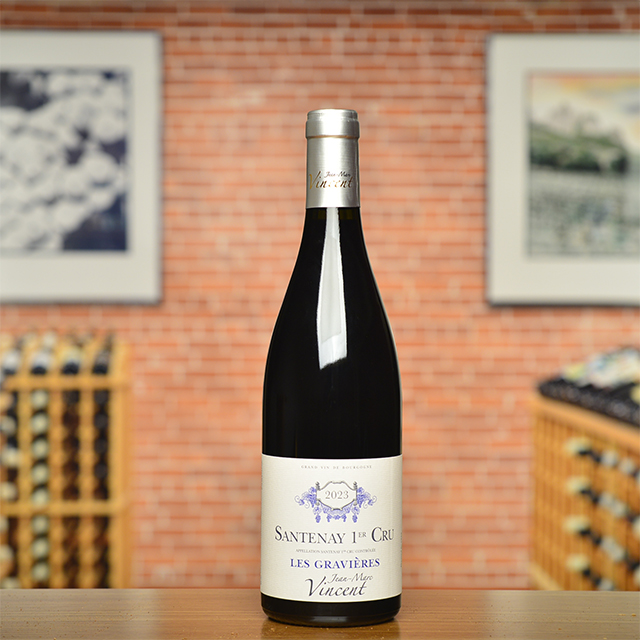Notify me
2020 Beaujolais Blanc
Domaine Dupeuble
The Beaujolais is not necessarily the first place you’d look to find great Chardonnay, but who could resist the combination of old vines, limestone soil, and a beckoning price tag? Certainly not us. In the 510 years since founding their family domaine, the Dupeubles have selected the sites less favorable to Gamay, the region’s main cash crop, and planted Chardonnay for a Beaujolais blanc. Plump, juicy fruit dominates the nose, with an inviting abundance of citrus and peach, the whole upheld by a lively acidity. Like a delicious Burgundy but less fussy, Dupeuble’s white is just as reliable as their hedonistic rouge.
—Anthony Lynch
| Wine Type: | white |
| Vintage: | 2020 |
| Bottle Size: | 750mL |
| Blend: | Chardonnay |
| Appellation: | Beaujolais |
| Country: | France |
| Region: | Beaujolais |
| Producer: | Domaine Dupeuble |
| Winemaker: | The Dupeuble Family |
| Vineyard: | 2 ha |
| Soil: | Clay, Limestone |
| Aging: | Grapes are pressed, and held in stainless steel tank for a brief cold-soak |
| Farming: | Lutte Raisonnée |
| Alcohol: | 13% |
More from this Producer or Region

2024 Côte de Brouilly
France | Beaujolais
Brambly and mineral, this bottling exudes both the convivial charm of Gamay and the crunchy intensity of the Côte de Brouilly.

2024 Beaujolais
France | Beaujolais
Tangy, thirst-quenching Gamay from a family that has been making Beaujolais for over 500 years.

2023 Chénas “Chassignol”
France | Beaujolais
A finessed, mineral-driven beauty from hundred-year-old vines at the highest point in Chénas.

2024 Brouilly “Reverdon”
France | Beaujolais
This bottling is classic Brouilly, balanced and old-school, and showcases the beauty of Gamay.

2023 Fleurie
France | Beaujolais
Light and living, charged with herbs, cranberry, and strawberry.

2023 Chénas “Les Blémonts”
France | Beaujolais
Structured yet full of energy, with notes of blueberry, spice, and other things nice.

2024 Morgon “Vieilles Vignes”
France | Beaujolais
Leave it to Breton to take summer heat and turn it into a light summer breeze in a glass.

2025 Beaujolais Nouveau
France | Beaujolais
Limited Quantities! ~ Valentin Montanet’s rendition has guts, but it sure is kickin’, too, with loads of cherries and heaps of joy.

2024 Beaujolais MAGNUM
France | Beaujolais
This Beaujolais offers the drinkability of the most effusive Morgons with the frankness of a chiseled Moulin-à-Vent.

2021 Côte de Brouilly
France | Beaujolais
Alex Foillard fashions a Côte-de-Brouilly that strikes a deeper register, saturating the senses with tooth-staining fruit.
About The Producer
Domaine Dupeuble
About The Region
Beaujolais

After years of the region’s reputation being co-opted by mass-produced Beaujolais Nouveau and the prevalence of industrial farming, the fortunes of vignerons from the Beaujolais have been on the rise in the past couple of decades. Much of this change is due to Jules Chauvet, a prominent Beaujolais producer who Kermit worked with in the 1980s and arguably the father of the natural wine movement, who advocated not using herbicides or pesticides in vineyards, not chaptalizing, fermenting with ambient yeasts, and vinifying without SO2. Chief among Chauvet’s followers was Marcel Lapierre and his three friends, Jean Foillard, Guy Breton, and Jean-Paul Thévenet—a group of Morgon producers who Kermit dubbed “the Gang of Four.” The espousal of Chauvet’s methods led to a dramatic change in quality of wines from Beaujolais and with that an increased interest and appreciation for the AOC crus, Villages, and regular Beaujolais bottlings.
The crus of Beaujolais are interpreted through the Gamay grape and each illuminate the variety of great terroirs available in the region. Distinguishing itself from the clay and limestone of Burgundy, Beaujolais soils are predominantly decomposed granite, with pockets of blue volcanic rock. The primary vinification method is carbonic maceration, where grapes are not crushed, but instead whole clusters are placed in a tank, thus allowing fermentation to take place inside each grape berry.
Much like the easy-going and friendly nature of many Beaujolais vignerons, the wines too have a lively and easy-drinking spirit. They are versatile at table but make particularly good matches with the local pork sausages and charcuterie. Though often considered a wine that must be drunk young, many of the top crus offer great aging potential.
More from Beaujolais or France
2024 Fleurie
Guy Breton France | Beaujolais
2021 Beaujolais Blanc “Terrain Rouge”
Jean-Paul et Charly Thévenet France | Beaujolais
2024 Beaujolais MAGNUM
Domaine Dupeuble France | Beaujolais
2024 Beaujolais
Domaine Dupeuble France | Beaujolais
2023 Chénas “Les Blémonts”
Domaine Thillardon France | Beaujolais
2021 Côte de Brouilly
Alex Foillard France | Beaujolais
2023 Beaujolais Blanc “Clos de Rochebonne”
Château Thivin France | Beaujolais
2024 Morgon
M. & C. Lapierre France | Beaujolais
2023 Fleurie
Jean Foillard France | Beaujolais
2023 Moulin-à-Vent “Sous la Roche”
Domaine Thillardon France | Beaujolais
2024 Chiroubles “Cuvée Léa”
Guy Breton France | Beaujolais
2023 Chénas “Vibrations”
Domaine Thillardon France | Beaujolais
2024 Fleurie
Guy Breton France | Beaujolais
2021 Beaujolais Blanc “Terrain Rouge”
Jean-Paul et Charly Thévenet France | Beaujolais
2024 Beaujolais MAGNUM
Domaine Dupeuble France | Beaujolais
2024 Beaujolais
Domaine Dupeuble France | Beaujolais
2023 Chénas “Les Blémonts”
Domaine Thillardon France | Beaujolais
2021 Côte de Brouilly
Alex Foillard France | Beaujolais
2023 Beaujolais Blanc “Clos de Rochebonne”
Château Thivin France | Beaujolais
2024 Morgon
M. & C. Lapierre France | Beaujolais
2023 Fleurie
Jean Foillard France | Beaujolais
2023 Moulin-à-Vent “Sous la Roche”
Domaine Thillardon France | Beaujolais
2024 Chiroubles “Cuvée Léa”
Guy Breton France | Beaujolais
2023 Chénas “Vibrations”
Domaine Thillardon France | Beaujolais
Kermit once said...

Kermit once said...
You don’t have to be rich to cellar a great wine.
















